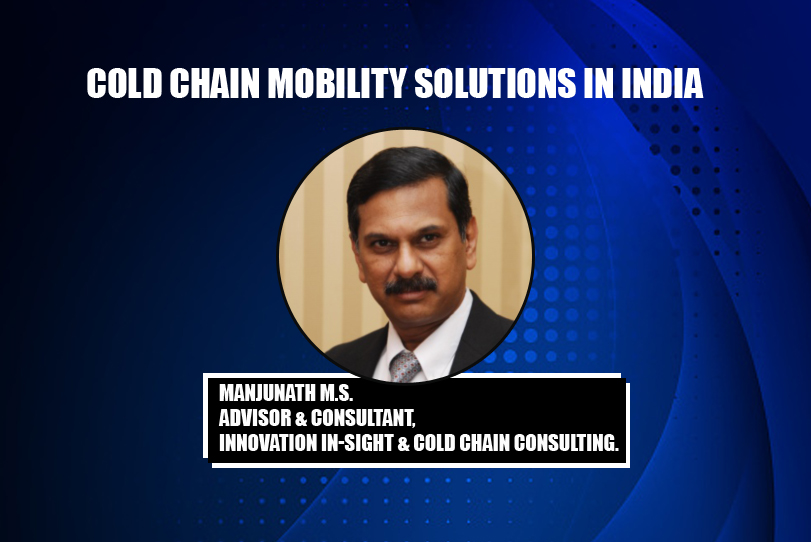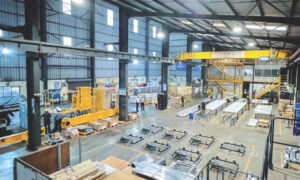This article provides an overview of the Refrigerated cold chain mobility solutions ecosystem. Authored by Manjunath M.S., Advisor & Consultant, Innovation In-Sight & Cold Chain Consulting.
Mobility is required not only for the cold chain sector, but for all commercial, industrial, and business operations, as it is the prime mover between supply & demand to satisfy consumption. If there is a high demand for a specific product whose manufacturing or supply is limited to a few locations, having viable mobility solution to transport those products and goods from the manufacturer or producer through a Supply & Distribution Chain the end user for consumption becomes critical. If such products are of perishable nature, they will need Temperature Controlled Environments & specially designed Vehicles and mobility solutions to transport across geographies. In such circumstances, temperature-controlled mobility solutions play a critical role in maintaining the quality throughout the transit period.
Such Temperature Controlled Mobile solutions can be quite expensive and hence the Business must be able to support the transport price and yet be profitable. There are several classifications of Cold Chain Mobile journeys or routes in India. International journeys over high seas in Refrigerated Containers travel very long distances across countries and continents. Pan India journeys crossing several states and covering over 1000 Kms or more are classified as Long-Haul journeys. Regional movements not exceeding 500 to 800 Kms are generally termed as medium haul routes. Short haul – Intercity journeys are those between nearby cities generally not exceeding 300 Kms. Finally, movement of Temperature controlled goods within the city are termed as Intra-City movements. These are usually for delivering goods from a Distribution Cold Warehouse to Point of Sale within the city. These are also called as Multi-Point Delivery journeys.
These generally cover between 25 to 50 Kms each trip. All Refrigerated Transport solutions have four main components, A Refrigeration System, An Insulated Cargo or Payload box, an automobile prime mover and an Automation system to track and trace the parameters like temperature, relative Humidity and other critical monitors during the journey and at all times when the cargo is inside the box. Sea going Reefer Containers have their own integrated refrigeration system with an insulated Prior to joining Ingersoll Rand International, years where he held several positions organization as Vice President Exports. Coco Cola, Pepsi, McCain’s, KFC, Bangladesh, Sri Lanka & the Middle Cold Chain Infrastructure refrigerated trucks or vans.
Such vans have refrigeration systems that are powered by the vehicle itself. In the last 10, years the concept and use of PCM (Phase Change Technology) has gained a lot of acceptance as a standalone refrigeration system for transportation or as a combination with conventional refrigeration. PCM systems work very well for short haul distribution within the city & nearby areas as well as in difficult areas where electric power availability and supply is poor. Temperature Controlled Mobility solutions are designed to operate on Road or Rail or Sea routes.
Some critical Small Volume -High Value (SVHV) goods like Vaccines & critical Pharma products can be transported via air routes too. The multimodal concept is an interesting & economical method of transporting perishables wherein goods are transported through various modes starting from point ‘A’ till they reach the final destination, point B. As an example, a refrigerated truck can be loaded with products at Point A and driven over road up to the nearest Rail Head, where the whole truck is loaded onto a Flat Bed Rail Wagon. Thereafter, the train pulls the wagon to a rail head which is nearest to the destination point B. Here, the refrigerated truck is unloaded from the wagon and it will again begin the last leg of its journey over road to reach its destination Point B. So, this way the cargo moves through various geographies in a “Multi-Modal” manner by a combination of haulage depending on what kind of transportation mode is most suitable or faster & economically viable for that journey. In case, there are sea going Reefer (Refrigerated) containers, these too can move on road – hauled by trailers, or on Flat Bed Rail Wagons up to the ports where they are loaded onto the ships for oversea journeys. Future innovations may happen in the quality and type of insulation used for Refrigerated Transport vehicles with newer technologies like Vacuum Insulated Panels.
We may see the advent of Electric vehicles and Battery driven DC Refrigeration systems. There will also be newer refrigerants for transport refrigeration, that are more climate friendly and energy efficient. There will be developments in Real Time Tracking and tracing of product parameters while goods are on the move. On the whole, we will see a lot of growth in transport refrigeration, both on the business front as well as on the technology front.
Cookie Consent
We use cookies to personalize your experience. By continuing to visit this website you agree to our Terms & Conditions, Privacy Policy and Cookie Policy.















